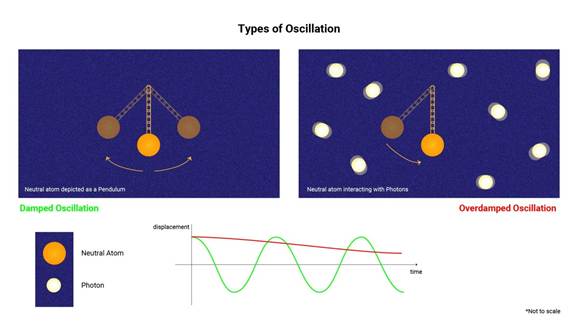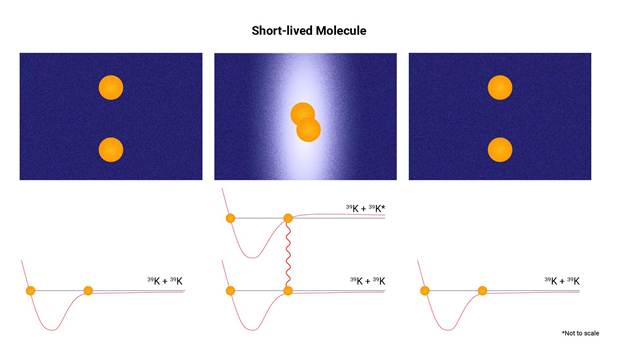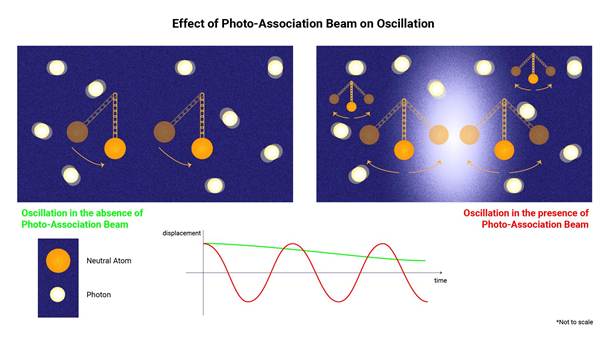Ministry of Science & Technology
Controlling transport of particles near absolute zero temperature, key ingredients for designing smart materials
प्रविष्टि तिथि:
13 FEB 2025 4:11PM by PIB Delhi
Researchers have observed the distinct transport properties of ultra-cold atoms in a quantum system and studied their behaviour upon sudden exposure to light pulse. This understanding holds potential towards the design and development of smart & high conducting materials, including components for the next-generation batteries.
Cold atoms, or atoms that have been cooled to extremely low temperatures near to absolute zero, are excellent candidates for performing precision measurements. Quantum transport includes the study of the charge and energy flow within systems where quantum effects dominate. Relevant phenomena include quantum tunneling that is vital in flash memory devices; quantized conductance which is critical for designing nanoscale electronic devices and quantum point contacts.
In a classical charge transport, as in case of present-day batteries, it is a straightforward flow of electrons. What distinguishes quantum charge transport from classical charge transport is that the former directly incorporates quantum statistical principles. That is why, the understanding of the transport and diffusion properties of these trapped ultra-cold atoms, when they are subjected to externally-controlled laser tuning, is vital. In order to conduct the experiment, the atoms have to be trapped, else they will wander off according to their kinetic energy. Furthermore, it could potentially help in designing smart materials that are efficient, customisable and ones that offer high conductivity.
A team from the Raman Research Institute, an autonomous institute funded by the Department of Science and Technology (DST), Government of India, attempted to decode the quantum transport properties of neutral potassium atoms at ultra-low temperatures.
The experiment was performed in two separate sequences and two different settings with the 3D trapping beams kept switched on throughout the experiment. In the first setting, laser-cooled potassium atoms, confined within a Magneto-Optical Trap (MOT), were exposed only to a driving laser beam. The MOT uses laser cooling and a spatially varying magnetic field to trap and cool neutral atoms to extremely low temperatures. In the second setting, along with the driving beam, another laser beam was shone on the atoms. In both the scenarios, the behaviour of sodium atoms were tracked.
"In our experiment, the role of the electrons in a conducting metal is played by neutral atoms that are laser cooled to micro-kelvin (near absolute zero) temperature. By observing their transport properties and responses to an externally tunable inter-atomic interaction, we noticed that transport properties got fundamentally modified,” said Saptarishi Chaudhuri, head, Quantum Mixtures (QuMIX) lab at RRI.
Typically, under such a scenario, the atoms are expected to oscillate just like a pendulum.
“Instead, we noted a dramatic change in the motion, from an overdamped oscillation to an underdamped oscillation. This was possible due to the interactions between the atoms and the photons” he said.
This is because when the driving laser beam was momentarily applied on the trapped atoms, it could displace the cloud of cold atoms. Soon after, it mimicked the dynamics of a damped harmonic oscillator due to increase in oscillation frequency. Subsequently, the atoms were also subjected to another intense laser light near a photoassociation (PA) resonance -- known to modify the interatomic interactions.
“When a sudden displacement was applied to the atomic cloud, we observed that it underwent collective oscillations in the presence of these interactions -- an outcome that was both surprising and at first counter-intuitive," said Anirban Misra, PhD students and lead author of the paper published in the journal Optics Letters.
Photoassociation, they said, is a process through which the atoms combine to form a short lived molecule leading to trap loss and recapture of the involved atoms. “Tuning interatomic interactions in cold atoms enables us to explore exotic quantum dynamics,” said Sanjukta Roy, another co-author of the study.
A comprehensive theoretical model developed by Supurna Sinha and Urbashi Satpathy, also collaborating authors of this work, has taken into account the photoassociation resonance significantly enhances the interaction strength among the atoms, thereby allowing them to introduce a novel method for detecting molecular resonances.
Depending on the control parameters of the experiment, that is, the power of the various laser lights and the strength of the magnetic field gradient in the MOT, it was possible to tune the dynamics as per required, the experimentalists said.
With more detailed studies, one could get better insights into transport properties of any quantum systems in response to tunable interactions, the RRI researchers said.
Link - Optics Letters, Vol. 49, issue 15, pp 4377 (2024) [ https://doi.org/10.1364/OL.532095 ]

Fig 1. Types of oscillations experienced by trapped ultra-cold neutral atoms

Fig 2. Short-lived molecule formed in the presence of PA beam

Fig 3. Effect on oscillation in absence (L) and in presence (R) of PA beam
***
NKR/PSM
(रिलीज़ आईडी: 2102761)
आगंतुक पटल : 1301